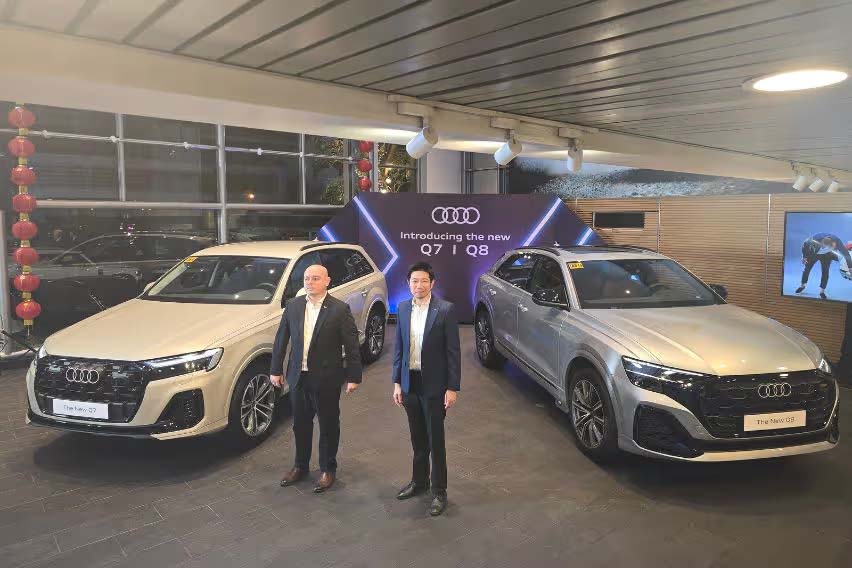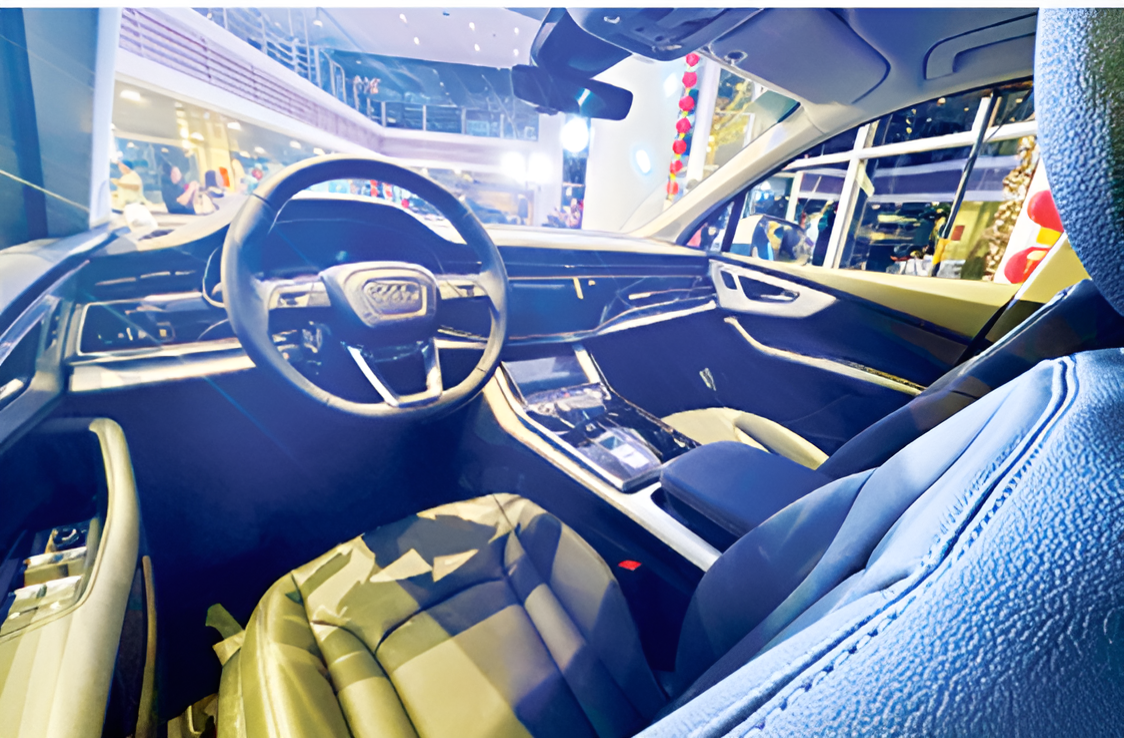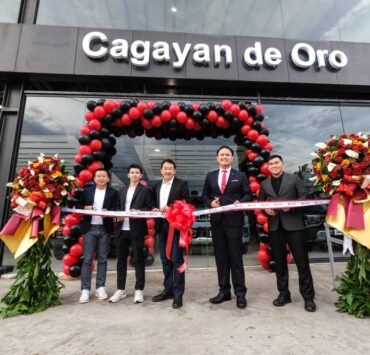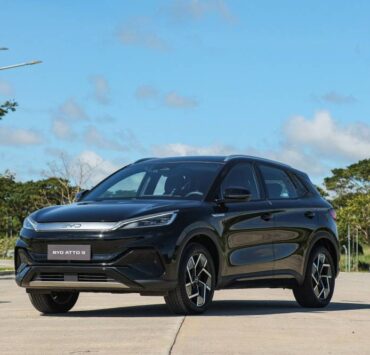AUDI WOW

Germany is known for a lot of things, be it in culture, arts, geopolitical history, and the sciences. Personally, I love the country because the German capital Berlin is a global hotspot for vegans (which does provide a compassionate counterpoint to all those processed meats the country is also known for).
When I was in Germany in 2012 as part of a Europe-wide work-vacation tour, my suitcase got damaged beyond repair. I bought a replacement there, and up to now, that suitcase still zips tight and rolls well, even after more than a decade of pushing and pulling it around. Germans do build things for keeps.
That mindset is the same in the cars they build. They don’t just build cars that’ll stand the test of time. They build cars that Germans, and people all over the world, would love to ride and drive in. As a result, over the decades, so many icons of the automobile world have been bred and released in Germany. As the saying goes: It was the German engineers who taught cars to walk. Peter Ruch, author of the book “Legendary German Cars,” extolled the quality of German workmanship and engineering. “German cars are a point of reference in virtually every segment, and that they would most likely stay that way for a long time because German companies are famous for the great effort they allocate to research and development,” he wrote.
Despite stiff competition elsewhere in the world, German automotive works remain the industry benchmark. And yes, the prices of their cars are indicative of the labor of love and mind poured into these machines. The admiration, the aspiration for, and the value accorded to German cars in the Philippines is no different from anywhere in the world. As far as we know, when you own a German car, you’ve definitely arrived.
And when you arrive in an Audi, we use Tagalog for emphasis: “Ang lakas ng arrive!”
As an epitome of the German automobile industry, the Audi brand also embraces the current trend toward electrification. PGA Cars, the sole importer and distributor in the Philippines of Audi and Porsche, as well as Italian marque Lamborghini and British luxury company Bentley Motors, has helped spearhead sustainable 100-percent electric mobility with the introduction of the Audi e-tron model range.
And wouldn’t you know it, there’s a bit of Berlin in those Audis, too. The e-tron uses vegan leather, which means it doesn’t use animals in its interiors. It combines either faux leather and Kaskade material, or a mixture of faux leather and the microfiber Dinamica, using recycled materials such as old plastic bottles used in both cases.
Audi, before transforming into a provider of sustainable electric premium mobility vehicles (its first e-tron concept was unveiled at the 2009 International Motor Show Germany and Audi’s first fully electric e-tron SUV went into production in 2019), was known in the supercar circles as the one that put together all-wheel drive lightweight, high-performance yet practical road cars in the Quattro, and proving their mettle in World Rally Championship wins.
Audi has since quenched its need for speed. It’s now answering the need for space. Interior space, that is.
Last Friday night, I was at Audi Philippines in Greenhills, San Juan to join the brand’s 20th anniversary celebration. It was also the occasion for PGA Cars to formally introduce the Audi Q7 and Q8.

The Greenhills showroom certainly reflected the sophistication and prestige of the brand, with the space integrating a showroom, aftersales lounge, multi-level service workshops accessed by elevators and driveways, executive offices, lifestyle areas, and a restaurant. The venue provided a street-level view of the country’s busiest thoroughfare—Edsa—from which one could gauge the overall traffic condition of Metro Manila. Regardless, the Audi showroom has remained constantly stylish and sleek, aided no less by the glorious specimens straight from the Audi factory and headquarters in Ingolstadt.
In between mingling with motoring media colleagues whom I hadn’t seen for quite a while, I peeked inside the latest version of the 7-seater SUV Audi Q7 and the Q8 SUV coupe, which our hosts boasted of having fresh designs, advanced technologies, and enhanced comfort and performance. I had a glimpse of the spacious interiors, and the materials used for their seats. The Q7 uses Mono Pur leather seats (which, I believe, isn’t sourced from animals), while the Q8 uses the Valcona leather seats (sourced from animals, unfortunately).
Audi describes these full-size luxury SUVs as having striking design details, advanced lighting and digital operating systems, and an extensive list of premium features. Additionally, it says that the Audi Q7 and Q8 feature “powerful but highly-efficient powertrains, renowned Quattro all-wheel drive systems, and luxurious cabin features. Plus, the two full-size SUV models ensure dynamic performance and utmost comfort as afforded by their adaptive air suspension systems.” Enthusiasts and buyers can check out these characteristics for themselves by visiting the Audi showrooms and requesting for a test drive. I suggest bringing your family members so all of them can check how generous the Q7 space is for up to seven passengers and their luggage.
Benedicto Coyiuto, Audi Philippines head, said, “As we mark our 20th year of delivering Audi models and services that befit the progressive status of the brand, we are launching the new Audi Q7 and Q8 to represent the start of Audi’s bold product offensive this year. The introduction of these models yet again demonstrate our unwavering commitment to continuously provide consumers with vehicles that come in a diverse selection of powertrain options, distinct performance characteristics, and innovative features unmatched by any other brand in the domestic premium segment.”
This latest version of the Q7 has an updated Audi virtual cockpit and MMI system, a Bang & Olufsen premium audio system, four-zone air-conditioning with the air quality package, and the ambient LED interior lighting package that offers a wide palette of color options.
The new Q7 beams with high-intensity Matrix LED headlights with dynamic turn signals, their functions identified by a fresh design. The daytime running lights are placed higher in the vehicle’s front end, making the Q7 appear wider and more assertive. The LED rear lights illuminate with improved clarity and contrast, and underline the aesthetic changes at the back.
The Audi Singleframe grille is now defined by octagonal patterns arranged by vertical inlays. The new interplay between the Singleframe’s contours and the headlights creates a completely new front-end architecture clearly emphasizing the powerful appearance of the new Q7.
Among the Q7’s fresh details are the new prominent air intakes neatly integrated into the latest model’s design. Special touches to parts of the front bumper, door trim, and diffuser, along with redesigned tailpipes, elevate the new Q7’s styling.
Powering the new Q7 is a turbocharged 3.0-liter six-cylinder TFSI gasoline engine delivering 340 hp and 500 N-m of torque. It is combined with an 8-speed tiptronic transmission that sends output to Audi’s Quattro permanent all-wheel drive system. This enables the Q7 to reach 100 kph from a standstill in only 5.6 seconds. Top speed is electronically governed at 250 kph.
Engineers say that the Quattro drivetrain guarantees power is delivered to the axle with the best traction available, resulting in consistently stable performance over any surface. Further ensuring this is the new Q7’s adaptive air suspension with controlled damping, which now delivers an even more comfortable ride. It keeps the vehicle level even while it is cornering, accelerating, or braking hard. And, depending on the mode preferred through the Audi drive select function, the system can make the luxury SUV handle more firmly in spirited driving, or ride quite comfortably while cruising.

Transforming the new look of the Q8
On the other hand, the new Audi Q8 SUV coupe boasts of the “cutting-edge lighting system matched by equipment, color choices, and design elements that bring the model to the top of the luxury SUV segment.”
Audi Philippines said that Audi reduced the decorative elements in the new Q8. The brand’s signature Singleframe grille remains upright and made bolder by octagon patterns with vertical inlays. More prominent air intakes polish the front-end design while aiding performance.
The new Q8’s Matrix LED headlamps with dynamic turn signals provide a crisp design touch. Now placed higher in the vehicle’s front, the daytime running lights make the new Q8 look wider, and also create a visual link between the headlights and the Singleframe.
Audi’s new and modern corporate identity on the latest Q8 are the two-dimensional rings comprising the brand logo. Instead of a chrome finish, the four rings come in Polar White set against a black background.
Audi has further refined the equipment range for the new Q8. Among the vast collection of items are the enhanced Audi virtual cockpit and MMI touch response system, cabin trim in silver gray with diamond finish inlays, a Bang & Olufsen premium audio system, the multi-configurable ambient LED interior lighting package plus, extended interior elements in leather, seats wrapped in a combination of perforated Valcona leather and Cricket leather, four-zone automatic air-conditioning with the air quality package, and illuminated S line door sills with aluminum inserts.
Just like the Q7, the new Q8 is powered by a 3.0-liter turbocharged TFSI V6 gasoline engine producing 340 hp and 500 N-m of torque, letting the vehicle sprint from rest to 100 kph in 5.6 seconds and to a governed maximum speed of 250 kph. The 8-speed tiptronic transmission responds accordingly to the power it receives, driver inputs, and the mode chosen in Audi drive select. It sends the engine’s output to Audi’s renowned Quattro permanent all-wheel drive system. The Quattro drivetrain guarantees power is delivered to the axle with the best traction available, resulting in consistently stable performance over any surface.
The new Q8’s electronically controlled air suspension system with continuously adaptive damping complements the capabilities of the engine, transmission, and Quattro all-wheel drive. It instantaneously keeps the vehicle level even while it is cornering, accelerating, or braking hard. It also makes the new Q8 ride comfortably by absorbing impacts, cushioning the SUV’s occupants against bad pavements.
In equal measures, the Audi Q7 and Q8 are worth your consideration if you’re in the market for a true-blue German car. But my bias, of course, is for the “kinder” one, the Q7, which doesn’t use any animal skin.


















